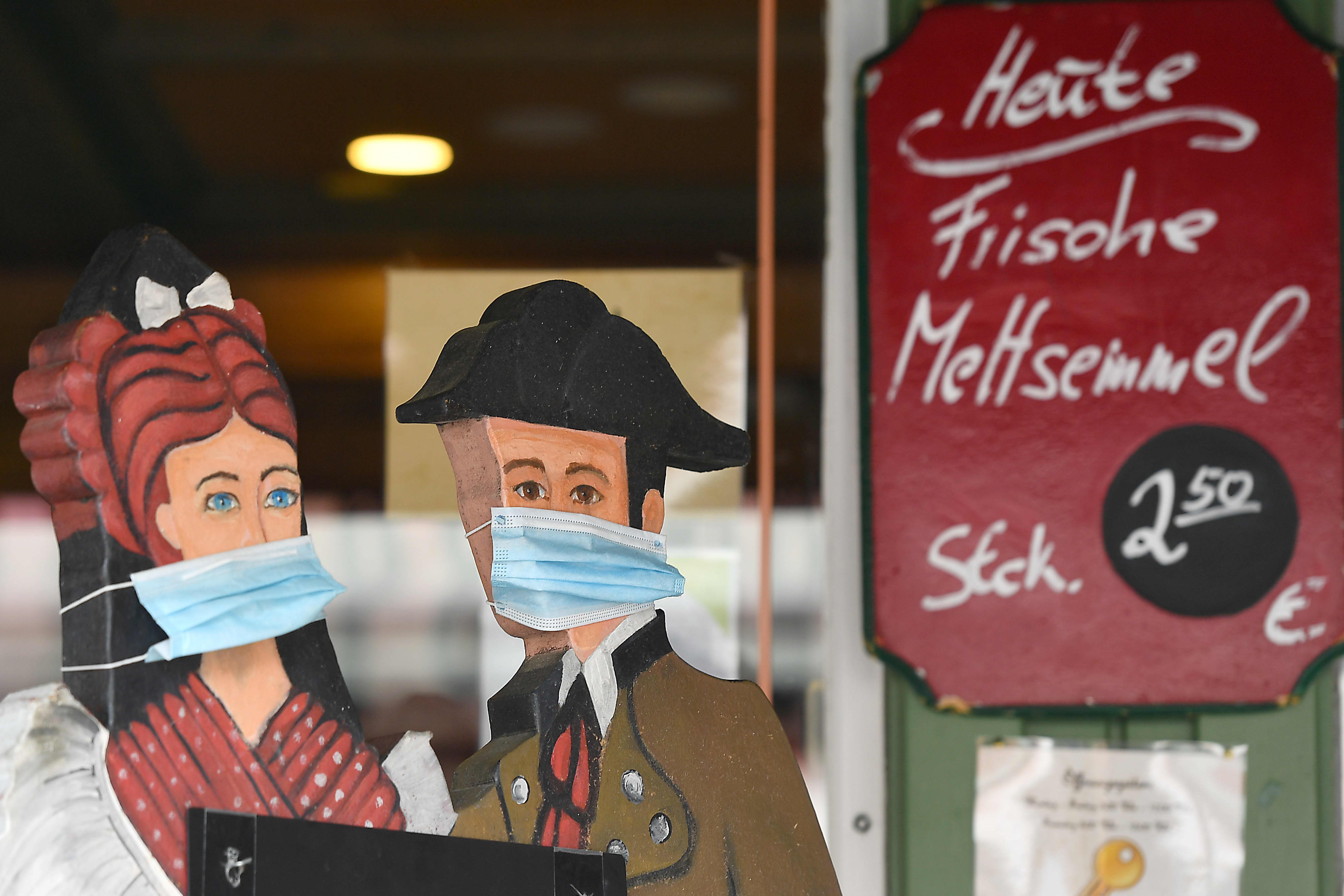
Advertising figures with a protective face masks in Munich, Germany.
Lennart Preiss | Getty Images News | Getty Images
Germany’s economic prospects for 2020 are looking increasingly bleak, with the country’s leading research institutes downgrading GDP (gross domestic product) forecasts for this year and beyond.
Publishing a joint economic forecast Wednesday, Germany’s prominent economists warned that the coronavirus pandemic is leaving what they called “substantial marks” on the German economy, adding that “its impact is more persistent than assumed in spring.”
They revised their economic outlook downward by roughly one percentage point for both 2020 and 2021. They now expect GDP to fall by 5.4% in 2020 (lower than a previous -4.2% forecast) and to grow by 4.7% (less than a previously forecast 5.8%) in 2021, and 2.7% in 2022.
The “Joint Economic Forecast” is published twice a year on behalf of the German Economy Ministry and is prepared by the German Institute for Economic Research (DIW Berlin) and the Ifo Institute in Munich, as well as several other organizations.
They said the downgrade follows a more pessimistic assessment of the recovery process. “Although a substantial part of the drop in output experienced in spring has already been recovered, the remaining catch-up process is the more difficult part of the return to normality,” Stefan Kooths, head of forecasting at the Kiel Institute, said on the outlook.
The downgrades are not surprising given a second wave of coronavirus cases that is ravaging Europe and no less Germany, a country that has been praised for its initial response to the virus in spring. Germany kept deaths from the virus low and still under 10,000, far lower than the toll seen in the U.K., France, Spain and Italy, which have all seen over 30,000 fatalities. Nonetheless, Germany, like its neighbors, has been seeing a sharp rise in infections as a second wave sweeps across the continent. On Tuesday, 4,122 new cases were reported, according to data from public health body, the Robert Koch Institute, and over 5,132 new cases Wednesday.
German Chancellor Angela Merkel adjusts her protective mask on her way to a Bavarian state cabinet meeting at Herrenchiemsee Island, Germany.
Peter Kneffel | Pool via Reuters
Germany has been reintroducing restrictive measures across the country although the rules vary from state to state. In some virus hotspots, bars and restaurants must close early, and now some states are introducing restrictions on travelers coming from parts of the country with high infection rates. Against this backdrop, any recovery for the hospitality and tourism sector looks far off.
“Activity in this part of the German economy will remain depressed for some time to come and will catch up with the rest of the economy only once measures to control the pandemic have largely been dropped, which we do not expect before next summer,” said Kooths.
As with other European economies, such as the U.K., the government is very keen to not introduce another national lockdown that shut down the manufacturing sector earlier in the year, a blow for Germany’s export-oriented economy. Even more so as that sector is driving the recovery, economists note.
“The recovery is being driven primarily by exports, which had contracted particularly sharply in the course of the crisis,” the report noted with Kooths adding that “the consequences of the crisis are by no means over once the slump has been made up for. Production capacities are expected to be about one percent lower than pre-crisis estimates over the medium term, although the longer-term damage of the crisis is particularly hard to assess.”
The Covid-19 crisis has also had a clear impact on the labor market. Despite massively falling back on short-time working schemes, an estimated 820,000 jobs were lost by mid-year, the institutions said.
Since then, the number of people in employment has risen again slightly, but the pre-crisis level is not predicted to be reached until mid-2022. The unemployment rate is expected to rise to 5.9% this year and next year, and to fall slightly to 5.5% in 2022.
The most important risk to the forecast stems from the still uncertain course of the pandemic, the experts noted. The institutes assume that starting in spring 2021, disease control measures can be rolled back to such an extent that they no longer have a significant impact on economic activity by next fall. But that is uncertain.
“The unclear extent of corporate insolvencies in Germany and abroad as a result of the crisis also contributes to forecast uncertainty. In addition, various trade conflicts remain a source of concern. A positive risk to the outlook is the sharp rise in private savings which, if released more quickly than assumed in the forecast, could translate itself into a quicker than anticipated recovery, particularly in the consumer-related sectors of the economy,” the report said.




